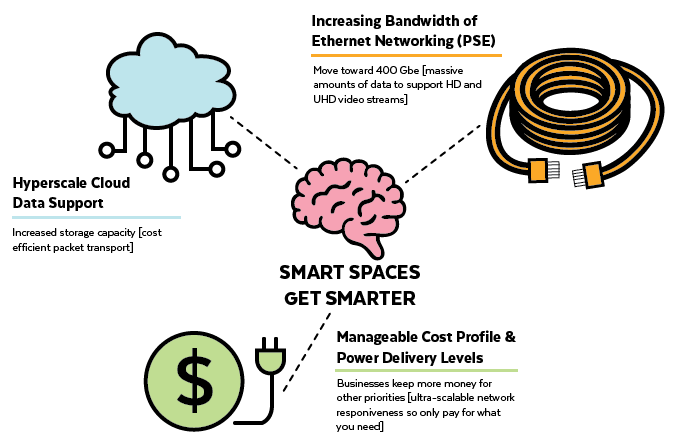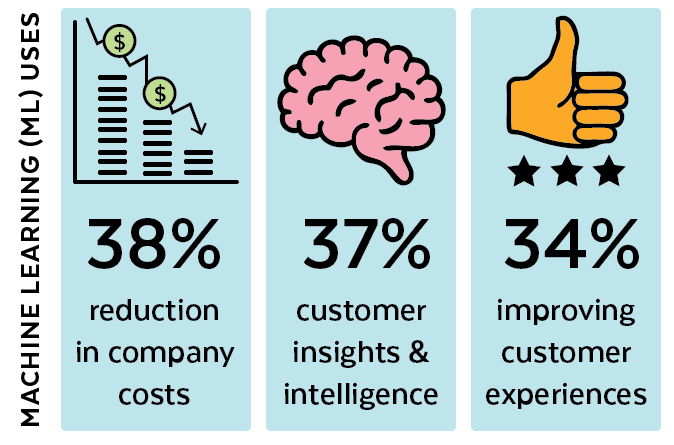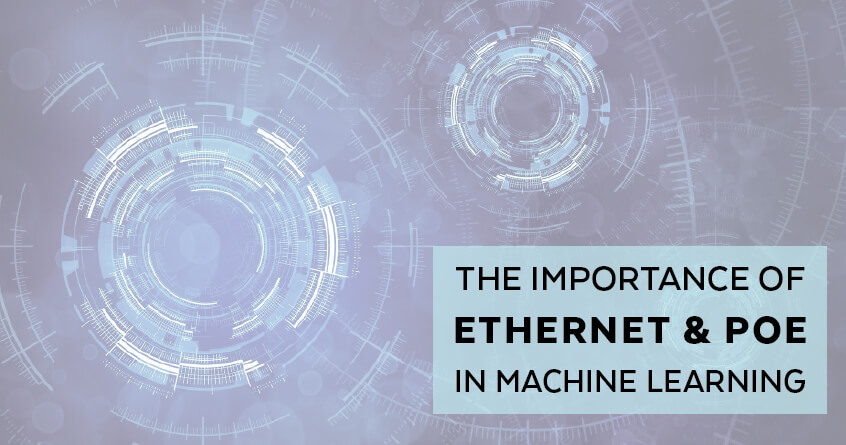Because Power over Ethernet (PoE) Powered Devices (PD) show up in user-facing smart-building deployments, they are ideal for collecting data. Moreover, the points where they are positioned and the kinds of data they collect make them extremely useful in the Machine-Learning (ML) space. In fact, you could say ML and PoE technologies have a symbiotic relationship. That data specific to the people occupying a room, building, or city provides the right insight to help managers, developers and other machines simplify the smart management process.
Smart buildings and smart devices are getting smarter by applying these data-driven insights. This process streamlines the functionality of homes, workspaces, and learning environments, making things like lighting more personalized. As a result, ML brings a whole new level of sophistication, personalization, and functionality to the world of low powered devices.
This blog will look at how ML works with PoE and the value it’s bringing to the table.
Machine Learning Defined
Machine learning applies artificial intelligence (AI) systems, including algorithms and programs, to automatically learn and improve experiences without human intervention. It develops computer programs that process data to “self” learn and improve existing systems.
There is a distinct difference between AI and ML. In AI, machines think like humans independently. In ML, continuous data mining harvests insights.
With ML, the efficient running of a building is the chief goal. Humans are still required. ML automates the process while anticipating and evolving. Change is seen over time, or you could say learning occurs.
ML implements in two phases. First, developers train neural network models using massive datasets. Without the help of machines, these data sets are too large for humans to interpret.

Once trained models are verified, they move into the inference engine phase. Inference is the predictive part of the application set. From a dictionary perspective, inference is the process of deriving strict logical consequences from assumed premises. The ML apps use the trained model to class external data and queries. Parallelization distributed between multiple training nodes sorts through enormous amounts of data to improve the model accuracy.

With ML, the importance of the rapid return of the results means that hyperscale computing needs to be deployed and always with a view to keeping costs down. As a result, the competition between cloud service providers is steep.
Machine learning growing adoption in business across industries reflects how effective its algorithms, frameworks and techniques are at solving complex problems quickly. The global machine learning market was valued at $1.58B in 2017 and is expected to reach $20.83B in 2024, growing at a CAGR of 44.06% between 2017 and 2024.
Louis Columbus, Roundup of Machine Learning Forecasts and Market Estimates 2020
Forbes.com
Device as ML Data Collector
The smart home, office and city employ a diverse set of connected technologies that are not only simplifying management processes, they’re making bank. Up to 83% of IT leaders say AI & ML is transforming customer engagement, and 69% say it is transforming their business. [Enterprise Technology Trends, Salesforce Research.] Customer experience is a Midas touch the hospitality industry has capitalized on in recent years. That principle has definitely wicked its way into the approach for better smart space product development.
Additionally, the data capture process is amping up with 5G. Because 5G is also an enabler of IIoT, it provides the speed needed for IIoT applications. As the data from the IIoT amasses, ML and AI will increasingly gain insights.
Why ML Data Collection, Analysis and Interpretation In PoE Is Important
In the 2020 state of enterprise machine learning, the authors cite three main uses of ML.
- The reduction in company costs (38%)
- The generation of customer insights and intelligence (37%)
- The improvement of customer experiences (34%)
 Customer insights drawn from ML are enhancing business process effectiveness in verticals like security, billing and supply chain management helps service providers to identify anomalies and alert customers. Smart billing helps service providers improve customer satisfaction by enabling smart billing to optimize rate plans automatically.
Customer insights drawn from ML are enhancing business process effectiveness in verticals like security, billing and supply chain management helps service providers to identify anomalies and alert customers. Smart billing helps service providers improve customer satisfaction by enabling smart billing to optimize rate plans automatically.
In smart settings, ML optimizes satisfaction is through predictive maintenance scheduling and automated order processes for replacement parts. Connected devices leveraging the last mile Ethernet ecosystem to bring broad-based solutions that are interoperable and cost-effective.
Places Where Machine Learning and PoE Intersect
The best way to understand how ML will begin showing improvement for the end-users is to discuss how it is used within different technologies—autonomous cars and smart buildings.
How Autonomous Vehicles Use ML
Autonomous vehicles are, by definition, driverless. They have neural networks that synthesize to help vehicles learn how to react in real-time. These features use apps based on algorithms that take sensor data to predict driver responses. The sensors rely on speech and facial recognition and make these “perceptions” and plug them into the car driving system. An autonomous driving algorithm can also learn multiple routes between home and work and choose the roads with the least amount of traffic based on traffic alerts.
How Smart Buildings Use ML
In the smart building, ML is both supervised and unsupervised.
In the training session, algorithms in supervised ML sort through labeled training data. The supervised algorithm learns from previous examples by pairing inputs with the desired outputs. The algorithm searches through the data set for the input that corresponds to the desired output.
In unsupervised ML, the algorithm searches for previously unpredicted data sets with no pre-existing labels and a minimum of human supervision.
One of the ways this learning might show up is in a smart lighting platform, “knowing” a preset light level for a meeting or classroom. When the teacher starts a presentation, it not only lowers the light to predetermined levels to allow a presentation screen to show up, it might also lower blinds on the windows. Smart lighting algorithms might learn when to turn on motion sensors for lights for a cleaning crew and when they come on, have them turn on at 50 percent intensity.
As these smart space trends continue to develop, ML technology will continue to make the places we live and work more efficient, intuitive, and personalized.
Follow Versa Technology on YouTube.
Gartner Top 10 Strategic Technology Trends for 2020
https://youtu.be/6HzdOkPPPRU

